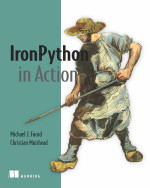[Intro]
Many people will be familiar with the notion of an "End Point" especially those who use WCF or other web service frameworks. An end point is "the entry point to a service, a process, or a queue or topic destination". My WCF background has had the ABC drilled into me (Address, Binding and Contract) as the 3 things that basically define an end point. MT is pretty much the same. Also like WCF, the endpoints are a configuration aspects of the solution so it seems valid to put this information in a config file. The MT boys are clearly Castle fans (although other IoC frameworks can be used) and they have chosen in most of the samples to use Castle Windsor to configure the endpoints.
SIDE NOTE: For those unaware of Castle Windsor (an IoC implementation) it allows you to write loosely coupled code and specify the concrete implementation detail via config, a little bit like the example of the Asp.Net Membership Provider which is a plug in pattern. Using MT without understanding IoC may prove to be difficult... in fact I would say you are almost certainly biting off more than you can chew. Look in to the Castle stack, it really is great OSS framework to help pick up good habits.
Moving on...
The defining of the endpoints should not be confused with the Castle implementation. It is just as easy to do this in code. Anyway Lets walk through a typical castle config file for MT:
From the Starbucks Sample:
<?xml version="1.0" encoding="utf-8" ?>
<configuration>
<facilities>
<facility id="masstransit">
<bus id="customer"
endpoint="msmq://localhost/mt_client">
<subscriptionService endpoint="msmq://localhost/mt_subscriptions" />
<managementService heartbeatInterval="3" />
</bus>
<transports>
<transport>MassTransit.Transports.Msmq.MsmqEndpoint, MassTransit.Transports.Msmq</transport>
</transports>
</facility>
</facilities>
</configuration>
First and foremost this is a castle config. The name of the file "Starbucks.Customer.Castle.xml" is a pretty good hint and I know "facilities" is a castle concept. MassTransit have embraced the concept of facilities which you can investigate here. MassTransit have their own Facility, namely the MassTransit.WindsorIntegration.MassTransitFacility which helps us get up and running with out having to know about all the plumbing. In this MassTransit specific facility we define the Bus and the Transports. The transports child node is equivalent to our "Binding"; it is essential so we know what transport mechanism to use. You will see standard .Net notation for expressing a type in XML, i.e: "Fully.Qualified.Namspace.TypeName, Assembly.Name". This type must implement the interface MassTransit.IEndpoint. Currently there are adapters for MSMQ, NMS, Amazon SQS and WCF.
The other child node in the facility defines the Bus. Here we give the Bus a identifier and its end point. These are both mandatory. The end point will be the URI the bus will receive communication from, when the application publishes a message. The Id indicates that there can be multiple buses configured, which there can. The bus also can have several child nodes specifically:
- controlBus
- dispatcher
- subscriptionService
- managementService
The Control Bus is involved in managing the disparate system. For example the Starbucks example uses a control bus to manage the interaction amongst the server side consumers: the Cashier and the Barrister. For more info on a Control bus see page 540 in Enterprise Integration Patterns.
The Dispatcher is a means to control the use of threads. High volume message interaction can be handled using multithreading specifically with the attributes maxThreads and readThreads, both of which are self explanatory integer values.
The Subscription Service is the common service that provides an endpoint for subscriptions. The only value required is the end point attribute.
The Management Service allows for specifying a heartbeat monitor for checking the health of your services queue. The samples use the SubscriptionManagerGUI to show the queues that are being listened to and the health of the subscriptions.
I do not believe any of these bus child nodes are mandatory, from looking into the code the only requirements are that the bus has must have an id & end point and the facility has a defined transport.
There are a couple of notes for new comers to Castle and MassTransit. Like most config files the XML file that is shown above should have its build action as "Content, Copy Always". The Queues that each service uses also need to be set up (e.g. in MSMQ) before they can be used. Luckily the exception handling in MassTransit is pretty good and will let you know that and endpoint is not set up if it is required, just be sure to read the queue name correctly. I spent a about 15 minutes trying to figure out why a sample subscription was failing when the exception was saying I had not set up "mt_server1". I thought it was saying "mt_server". If in doubt read the exception! We will cover how the castle config is tied up in the Host And End points post.
End points and their configuration may be a bit tricky for new comers, but if you break each piece down it becomes more manageable.





No comments:
Post a Comment